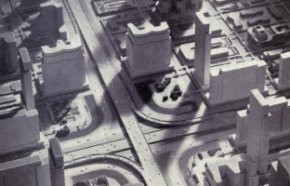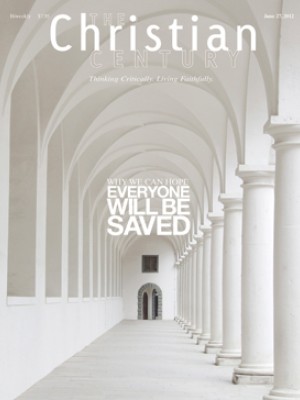Future fatigue

Once upon a time, ministry involved preaching, counseling, leading worship and guiding congregations in mission. All were demanding tasks, to be sure, but they were nothing compared to what is expected of pastors today—predicting the future. Clergy conferences now trumpet words like emergent, postmodern, next and futuring, a vocabulary born out of apprehension that the church is crumbling around us and the future is a giant meteor hurtling toward our doomed planet. A new generation of prophets—mostly young, mostly technologically savvy—paint apocalyptic scenarios of the coming wrath followed by visions of a wireless new Jerusalem rising from the ruins. “Those who cannot remember the past are condemned to repeat it,” wrote Santayana, but today’s wisdom runs in the other direction. Those who cannot anticipate the future are condemned to be crushed by it.
We who work in seminaries are no exceptions. Until recently, about the only forecasting required of me was to announce what courses I planned to teach during the next term and to participate in the periodic convulsion episodes known as “curricular reform.” But now we are warned that the master of divinity degree (the bread and butter of many theological schools) is rapidly losing traction, the idea of students coming to campus to spend several years reading theology is quaint and unrealistic, and seminaries are beginning to look like Studebaker dealerships.
Read our latest issue or browse back issues.
So both clergy and professors are pressed to be soothsayers. We sit around conference tables gazing anxiously into the future, and what we think we see is as unsettling as it is increasingly clear. The future church (and the future seminary) will be less reliant upon tenured professionals and will be more flexible, increasingly free from bricks and mortar, accessible online, interactive, more focused on experience than on belief and doctrine, and firmly embedded in the digital, fluid, interfaith, multicultural and unbounded realities of the new global context.
Or will it? The problem with trying to fathom the future, as former defense secretary Donald Rumsfeld once clumsily observed, is that there are not only “known knowns” and “known unknowns,” but also “unknown unknowns.” Rumsfeld omitted perhaps the most perilous ingredient of all: “presumed knowns,” things we think we know but do not.
The 1939 New York World’s Fair was dubbed “the world of tomorrow,” and millions of visitors sported buttons proclaiming, “I Have Seen the Future!” The fair promised to rocket people out of the gloom of the Depression into the wonders of 1960, but what visitors actually saw were things like Tomorrow Town, a neighborhood that looked like suburban Levittown, a futuristic “smell-o-vision” movie theater that never materialized, and a Westinghouse-sponsored dishwashing contest between Mrs. Drudge, with dishpan hands, and Mrs. Modern, who sported a cocktail dress and effortlessly loaded dishes into a spiffy electric dishwasher.
The most popular attraction was General Motors’ Futurama, a ride that ferried visitors over a scale model of a gleaming future city. Not surprisingly, GM envisioned a slumless metropolis built around the automobile, with lovely gossamer suspension bridges and congestion-free superhighways. E. L. Doctorow, who was nine when he visited Futurama, got the point. “General Motors is telling us what they expect from us: we must build them the highways so they can sell us the cars.”
In retrospect, the world of tomorrow was a vision mostly cantilevered off of the present and whipped to a froth through wishful thinking. Overwhelmed by unknown unknowns and sometimes led astray by presumed knowns, the 1939 Fair was an often naive hymn to American progress and consumerism. The designers can be forgiven for not foreseeing that the gleaming towers of Futurama would one day be brought down by terrorism, or that the grandchildren of the fairgoers would have to rescue General Motors off the scrap heap, or that little girls like Gloria Steinem, who was five in 1939, would grow up to have a different take on Mrs. Drudge and Mrs. Modern. But how could they, in their blue-sky optimism, have missed an already bellicose Third Reich and the global conflict that was only months away?
This does not mean that predicting the future is either impossible or undesirable. Psychologist Rollo May said that neurotics and artists, who consciously live out emerging trends that the rest of us keep in our unconscious, are particularly good at predicting the future. (Think Steve Jobs.) But people of faith should probe the future with humility, prayer and, as befits Easter people, an openness to being completely and absolutely surprised.
A systematic theologian I know once gave the closing address at a church futuring conference in the early 1970s, when Alvin Toffler’s Future Shock was all the rage. Following papers by culture critics, sociologists and others who were making confident prognostications, this theologian said, in essence, “I am a theologian. I have no idea what the future holds. I know only that it will be held in the hands of God.” Years later he came across the conference papers. After rereading them, he said, “You know, I was the only one who was right!”






